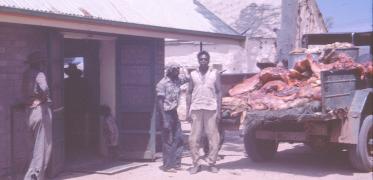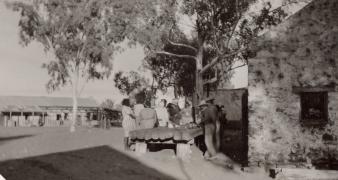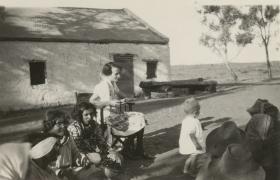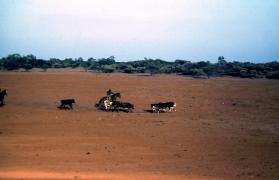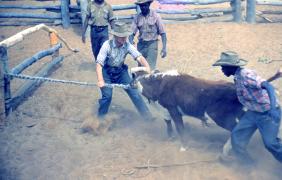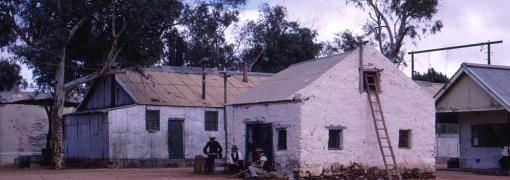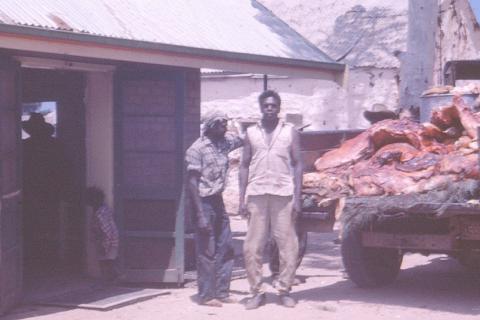The construction date of this building is uncertain, but it is thought to have been built in the early phase of the Hermannsburg mission before it was temporarily abandoned by the German missionaries. Winnecke’s map in 1894, shows a small store situated approximately where this building is located. However, the building that remains is likely to have been rebuilt and modified during Pastor Carl Strehlow’s tenure.
Stockraising was an important undertaking at the mission, both to provide a source of income and fresh meat. The period of Carl Strehlow’s tenure saw greater Aboriginal participation in Mission activities including the building program and stock work including cattle, sheep and goats. As you can imagine prior to electricity being available in the later years of the mission it was not possible to keep meat for any length of time without curing it. The thick stone walls and floor provided the best relief from the heat possible.
A photograph in the 1930s shows the meathouse in the background, and at that time it was much larger than today.
The western section of the building was demolished prior to 1948 when the large kitchen, bake house and eating house was constructed. In 2019, structural stabilisation of the western wall (the face of the earlier demolition) was undertaken as it had started to move away from the building.
The meathouse was converted to a storeroom around 1958 when a new refrigerated building was constructed behind it.
Media
